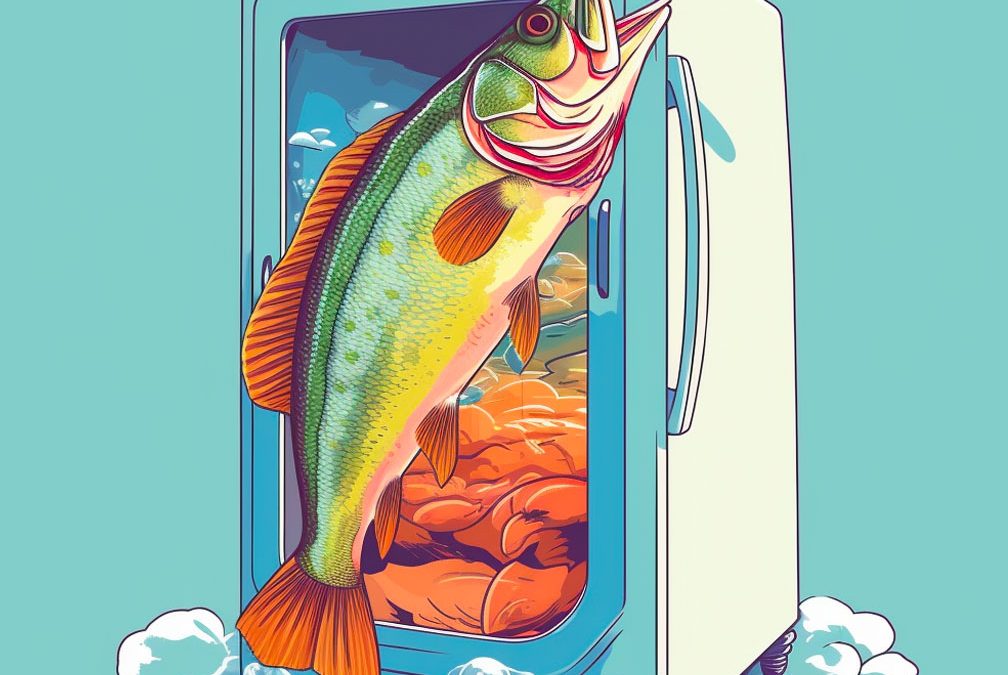For many anglers, fishing for bass is an activity that they enjoy all year round. During the cooler months, the challenge of catching bass in colder water temperatures can be a great experience. But, can you catch bass in 40-degree water? This question is a common one for those who love to fish for bass. Bass fishing in cold water can be difficult, but it is not impossible. Understanding bass behavior in cold water, the best techniques to use, and the right bait selection is crucial to a successful fishing trip.
Understanding Bass Behavior in Cold Water
Bass behavior changes as water temperatures decrease. In cold water, bass tend to be less active and more sedentary. The importance of temperature in determining bass behavior is significant. Typically, as the water temperature decreases, bass will move towards deeper water where the temperature is more stable. However, they may also hide in structure such as rocks or vegetation, which can provide some insulation from the colder water.
Different stages of bass activity can affect how they will behave in cold water. During the fall, bass will begin to slow down and hold up on some type of structure in their search for food. They will become more inactive as the water temperature continues to decrease, and they will hold up year-round in a spot where they know they have an abundant food source. In the winter, when their metabolism has slowed, they will not need to eat as much. They will be more reluctant to chase after large prey, opting for smaller meals instead. Bass will seek out sheltered areas, such as deep water or areas with wood, where they can maintain their body temperature.
Best Techniques for Catching Bass in Cold Water
The best techniques for catching bass in cold water will vary based on different factors such as weather patterns, time of day and year, and even water clarity. It is best to try out a range of techniques and see which ones the fish seem to be responding best to. Here are some techniques that have been found to be the most effective in catching bass in cold water.
Slow Retrieval: As the water temperature decreases, bass will become less active. Therefore, it makes sense to slow down your retrieval speed. By doing so, you can tempt the bass into biting, as the bait will appear to be an easy meal.
Jigging: Jigging can be a great technique when trying to catch bass in cold water. This technique works particularly well when fishing in areas with a lot of structure, such as rocks, logs, and drop-offs. By jigging, you are able to get the bait in front of the bass, making it easier for them to bite.
Float and Fly: This technique involves using a fly rod and reel to cast a light lure such as a dry fly. The float allows the lure to float on top of the water, and the fly attracts the attention of the bass. This technique works extremely well in colder water because the bass will be more prone to striking at a slower speed.
Spinnerbaits: Spinnerbaits can be very effective in colder water, especially in areas of low visibility. The vibration and flash from the spinnerbait can mimic small baitfish, which bass are more likely to go after in colder water.
Bait Selection
The right bait selection can make all the difference when trying to catch bass in colder water. Here are some of the best baits to use when fishing for bass in colder water.
Jigs: Jigs are a popular bait choice for winter bass fishing. By using jigs, you can get the bait closer to the bottom, where the bass are more likely to be holding.
Plastics: Plastics can be effective when fishing for bass in colder water. Worms, for example, are an excellent choice when the water temperature drops. They can be fished slowly, which makes them even more appealing to the bass.
Crankbaits: Crankbaits can also be effective in colder water because they can be retrieved slowly. When using crankbaits, it is essential to choose the right color and size.
Challenges of Catching Bass in Cold Water
Catching bass in cold water can be more challenging than other seasons. Here are some of the challenges that anglers may face when trying to catch bass in colder water.
Visibility: In cold water, visibility can be reduced. This can make it more challenging to locate where the bass are holding. It can also make it more challenging to choose the right bait.
Fewer Bites: As the water temperature drops, bass become less active. This means that they are less likely to chase after larger prey.
Less Error Tolerances: In colder water, bass have a higher accuracy of spotting errors in bait presentation. Any anomaly, such as an uneven retrieve or too large a lure, is more likely to arouse their suspicion.
Conclusion
Catching bass in 40-degree water can be a challenging but rewarding experience. Understanding bass behavior in cold water, the best techniques to use, and the right bait selection is essential to a successful fishing trip. By employing these tactics, and persevering through the challenges, anglers can catch bass even in the coldest of waters. Always remember that it takes time, patience, and attention to detail to succeed. Happy fishing!

